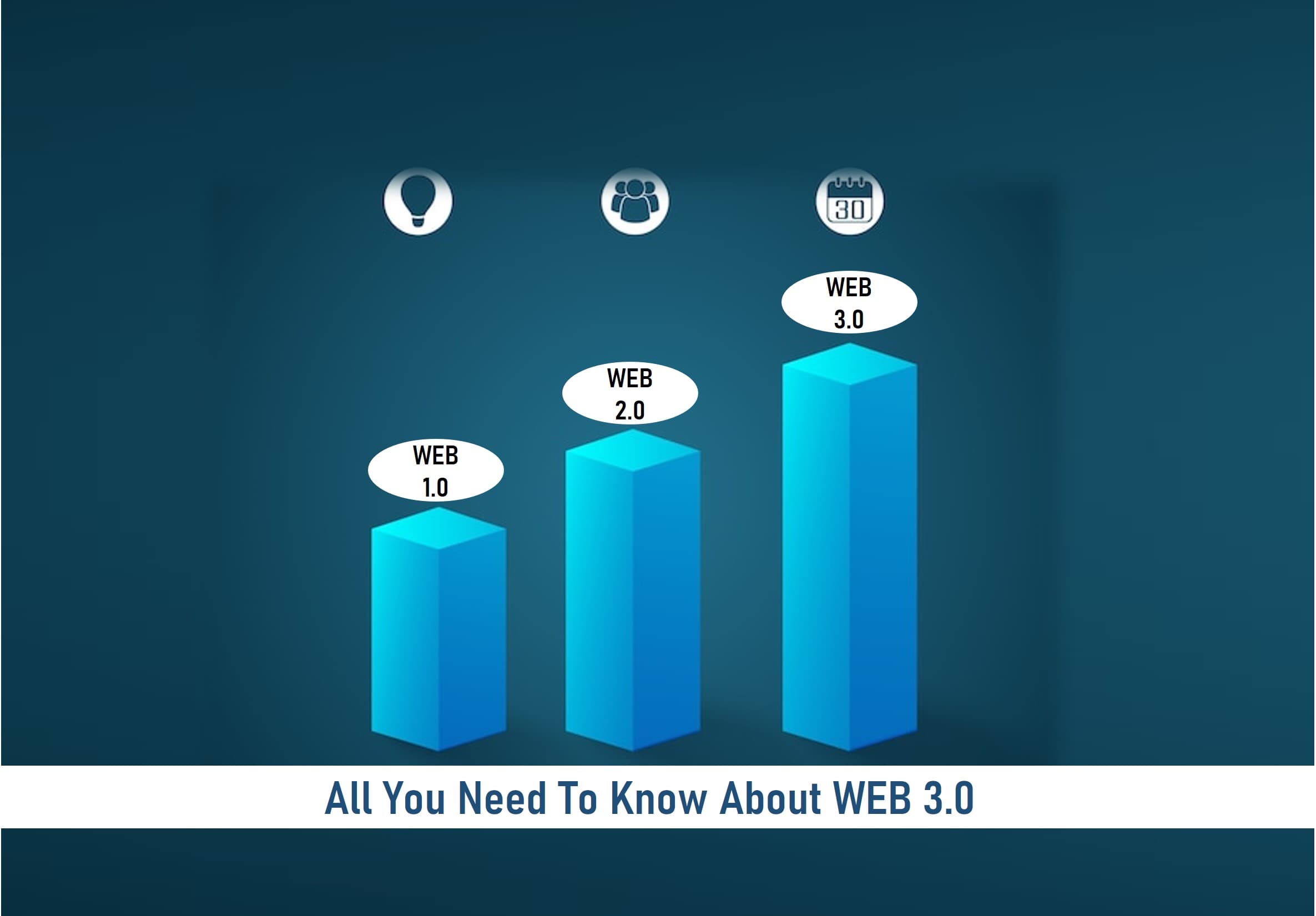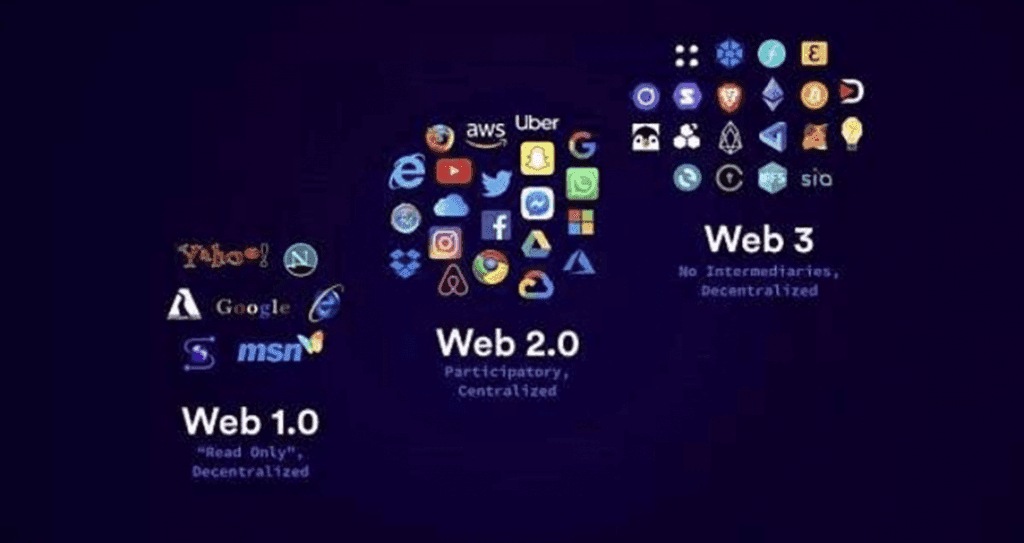
Imagine a new kind of Internet that can perfectly understand and interpret everything you convey – via text, voice, or other media. One where all the content you consume is tailored to you much more than before.
Web3.0, better known as Web3, is what society is dubbing the next iteration of the World Wide Web, with a dash of cryptocurrency. Ethereum co-founder Gavin Wood coined the term Web3 in 2014 as he started investing more in creating decentralized technologies and settled on the term Web3 after considering the previous internet versions.
Decentralized, in this context, means that no one entity controls how users experience the internet. It’s the World Wide Web in its most basic, ideal form — unregulated, peer-to-peer communication that does not require or include an intermediary.
Key Takeaways
• Web1.0 was the initial version of the Internet, which consisted of a collection of links, and homepages and was released in the late 1990s. Generally, the websites were not very interactive, just for reading and publishing basic pieces of stuff for others to read.
• After Web1.0 came Web2.0, which was referred to as the “read/write” version, as it allows you to open and change files rather than just viewing them. With this version of the Internet, people could produce content and post them on blogs.
• A rapidly increasing number of people want more control over their data and the content they see. This is where Web3.0 enters the picture.
• In a way, Web3.0 is a blend of its predecessors: a decentralized internet before Big Tech companies took over, mixed with the advanced applications of the modern web.
• Web3.0 will essentially be interoperable, fully integrated, automated via smart contracts, and used to enable anything from microtransactions in areas that are accessible and remote.
But what exactly is Web3.0, and how is it changing the way we interact with the internet and our applications?
SEE ALSO: Blockchain 3.0-All You Need To Know
SEE ALSO: Best Blockchain Node Providers – All you Need to Know
SEE ALSO: Blockchain Forensics – All You Need to Know

What Does Web3.0 Mean?
Web3.0 is one of the most recent Internet technologies, combining machine learning, artificial intelligence, and blockchain to enable real-time human communication.
Web3.0 is referred to as the “read/write/own” phase of the Internet. Users can engage in the management of internet protocols directly, rather than using free tech platforms in exchange for their personal data, which is the case with platforms like Facebook and Instagram.
This means that users are becoming participants and stockholders rather than mere information sources, thereby allowing them to get reimbursed for their online time.
Key Features of Web3.0
1. Open-source
It is ‘open’ in the sense that most of its assets are created using open-source software by an open and accessible community of developers, in full view of the public. Transparency is key here, creating a more trustworthy digital environment.
2. Decentralized
Users have the option to engage openly and privately without the interference of an intermediary party. Their actions are taking place in a decentralized space, giving them more freedom and control to manage their data.
3. Permissionless
Without the necessity for approval from a controlling and centralized organization, everyone, including users and providers, can participate on an equal level in Web3.0.
4. Ubiquitous access
Web3.0 allows us to access the Internet at any time and from any location. Web-connected gadgets will no longer be confined to computers and cellphones in the future, as they were in Web2.0.
Frequently Asked Questions(FAQs)
How does Web3.0 work?
One of the goals of Web3.0 is to make Internet searches significantly faster, easier, and more efficient so that even complicated search words can be processed quickly.
Nowadays, a user must engage with the frontend of a web2.0 application, which communicates with the backend, which then communicates with the database. The complete code is stored on centralized servers and delivered to consumers via a web browser.
Web3.0 lacks centralized databases for application state storage and a centralized web server for backend processing. Instead, a blockchain can be used to create apps that run on a decentralized server and are maintained by anonymous nodes on the internet.
How Does Web3.0 align with Blockchain?
Web3.0 will be a portfolio of decentralized apps that run on blockchains and Ethereum reports, and it will grant anyone permission to use the network’s services.
Right now, our participation on the internet is controlled by central authorities. Remember when Twitter banned former President Donald Trump?
The mission behind Web3.0 is to create a decentralized web that permits sites and services across all computer networks. Blockchain technology will validate user data, and you’ll have to purchase everything in Web3.0 with cryptocurrencies.
What are the Benefits of Web3.0?
Web 3.0 has numerous advantages over Web2.0 and how we currently use the Internet. It will make the web more innovative, safer, and transparent and allow for more efficient surfing.
1. Data privacy as end-users will enjoy advanced data encryptions, which will allow them to have complete control over their personal information.
2. Consistent services as users will be able to access their data easily in any situation thanks to decentralized data storage and also receive several backups, which would allow them access to their data even if the server fails.
3. One profile for all services as users no longer need to create separate personal profiles for multiple platforms. A single profile can be interconnected with and used on any platform, and the user retains complete control over any personal data.
When will Web3.0 be Implemented?
There is no implementation date for Web3.0 due to some issues with decentralization and security. However, there are some Web3.0 technology applications currently in use such as Chatbots, Wearables, and Wolfram Alpha.
Final Thoughts
Web3.0, which is still in the developmental process, hopes to leverage blockchain to reduce dependency on the big corporation and increase inclusivity and user experience.
In a world powered by blockchains, companies would compete to be more transparent than others as more transparency brings in more investors, and other participants will start to put more trust and faith in the security provided by crypto.
Blockchain tech and digital tokens will power Web3.0, so if you’re still not familiar with cryptocurrencies, it might be time to get involved with the movement.
Read More




